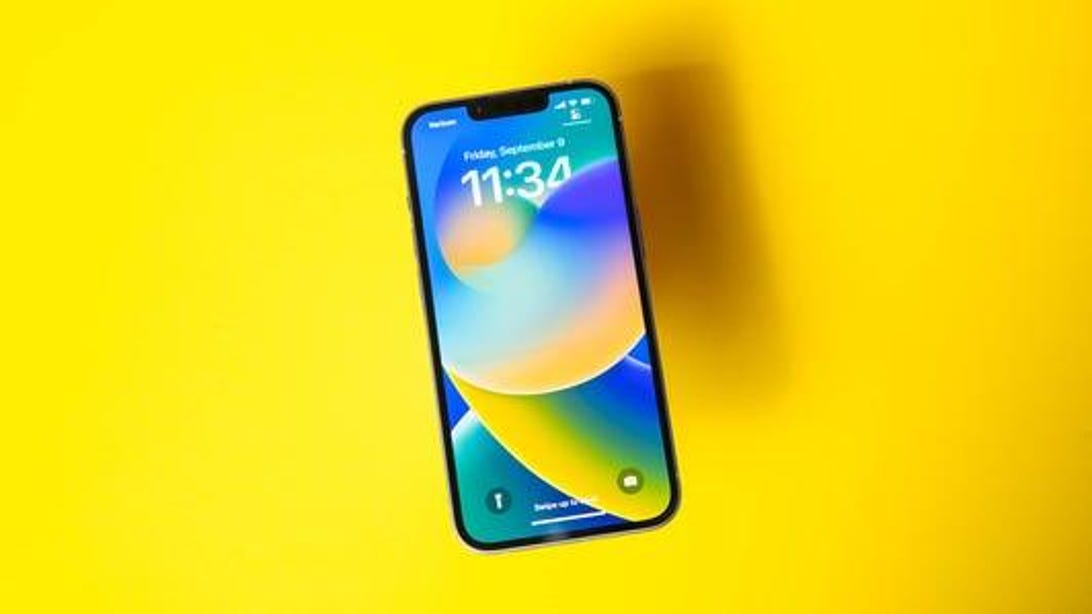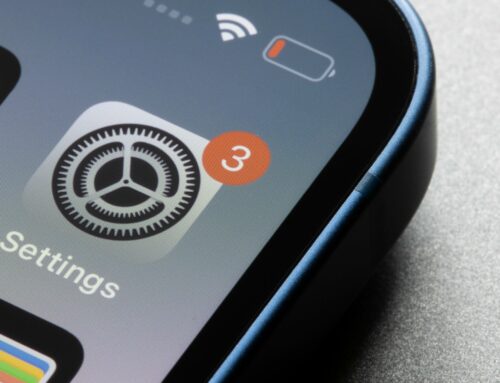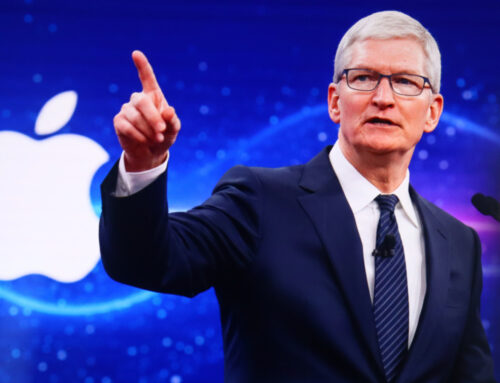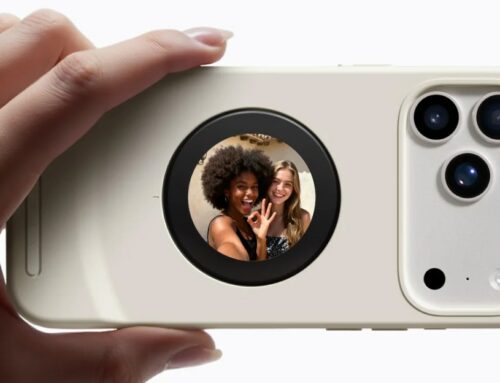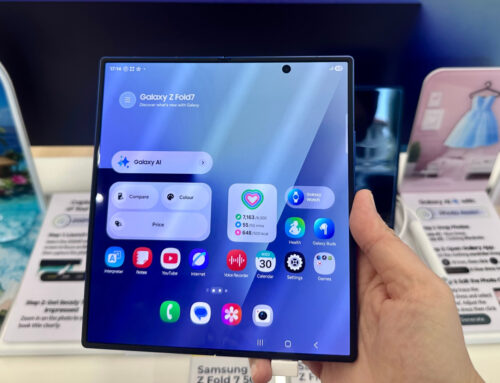This story is part of Focal Point iPhone 2022, CNET’s collection of news, tips and advice around Apple’s most popular product.
The iPhone 14 is both an improvement on last year’s iPhone 13 and one of the most minimal year-over-year upgrades in Apple’s history. On the outside, the 14 inherits the iPhone 13’s tried and true flat-sided aluminum design. On the inside, Apple essentially repackaged the iPhone 13 Pro, sans the telephoto camera and high-refresh-rate screen. The result is lovely and the iPhone 14 is a good upgrade for most people.
The iPhone 14 starts at $799 (including a $30 connectivity discount if you activate it with AT&T, Sprint, T-Mobile or Verizon), the same price as the iPhone 12 and 13 when they first went on sale. If you’re hoping for more significant improvements, there’s the more expensive iPhone 14 Pro and 14 Pro Max, both of which are brimming with updates.
iPhone 14 off-contract price breakdown
| Storage | US price | UK price | AU price |
|---|---|---|---|
| 128GB | $829 | £849 | AU$1,399 |
| 256GB | $929 | £959 | AU$1,579 |
| 512GB | $1,129 | £1,179 | AU$1,899 |
As Americans grapple with inflation, some companies have kept costs the same by offering a little less. The iPhone 14 seems like a way for Apple to release a new phone while maintaining last year’s price. Is this a case of “shrinkflation“? Maybe, but not necessarily.
The iPhone 14 reminds me of the iPhone 5C, which came out in 2013 alongside the iPhone 5S. The 5C was basically an iPhone 5 inside a new plastic body that was meant to appeal to a more budget-minded audience. While there are some similarities, the 14 seems to be aimed at balancing price and adding new features.
While the iPhone 14 Pro and Pro Max have the flashiest new features, it’s easy to overlook the improvements Apple made to the iPhone 14.
James Martin/CNET
Apple added a number of safety tools to the 14 including Crash Detection and satellite connectivity for sending emergency messages when you’re out of range of a cell tower. The iPhone 14 also got an internal redesign that helps dissipate heat better and allows its glass back to be repaired more easily and for less money.
But these are features most people will hopefully never use and they’re largely invisible. Even the iPhone’s move away from physical SIM cards to eSIM on US models is something most people will only deal with once when transferring their number.
Like
- Main camera upgrade is great
- Autofocus makes selfies look better
- Improved repairability is welcomed
- Action mode is smooth
Don’t Like
- Ultrawide photos are a step down in image quality
- Year-over-year upgrades are minimal
- Videos recorded in low light look just OK
The most obvious upgrade is the new larger version of the iPhone 14, called the iPhone 14 Plus. With the same sized 6.7-inch screen as the 14 Pro Max, the iPhone 14 Plus should appeal to people who want a large phone but don’t want to spend $1,099. However, the 14 Plus won’t be out until Oct. 7.
The iPhone 14 goes on sale Friday, Sept. 16, and is currently available for preorder.
iPhone 14 features
Familiarity is an underrated quality, and the iPhone 14 is filled with it. The 6.1-inch OLED screen has the same Ceramic Shield, screen notch and matte-finished aluminum as the iPhone 13. And it weighs 17% less than the iPhone 14 Pro, despite being nearly identical in size. That lighter weight makes the 14 a joy to hold and use with or without a case.
The iPhone 14 is rated IP68 for water- and dust-resistance, meaning it can survive being submerged under 6 meters of water (about 20 feet). So it should have no trouble having a can of Yerba Mate spilled on it.
One thing that’s missing from the 14 is a SIM card tray. In the US, the iPhone 14 will only work with an eSIM. Apple has partnered with US carriers to ensure the process of moving the number from your old phone to an iPhone 14 is as simple as putting your old iPhone next to your new one and following a few prompts. Smaller carriers like Mint Mobile and US Mobile also offer eSIMs.
My personal phone is on Google Fi, which supports eSIMs. But when I tried to transfer my number to a review unit, I had to contact the carrier for assistance. (Turns out my SIM card was very, very old.)
The iPhone 14 is available in five colors: Product Red, midnight, starlight, purple and blue, which is the color of the review unit Apple lent me.
Apple’s iPhone 14 Steps Up the Camera, Keeps Familiar Design
iPhone 14 cameras
The iPhone 14 has three cameras: a main wide angle and ultrawide cameras on the back, and a new updated TrueDepth camera system on the front. The iPhone 14’s camera is similar to the main camera on the iPhone 13 Pro, which is one of the reasons why I called it an iPhone 13 Pro without the telephoto camera.
Compared to the iPhone 13, the 14’s main camera has a larger sensor and a new lens with a faster f1.5 aperture. All that hardware combined with Apple’s new processing pipeline, called Photonic Engine, helps improve image quality, especially when you take photos in darker environments.
The iPhone 14 takes great photos thanks to a larger image sensor and a new way Apple processes photos.
James Martin/CNET
And in my tests, the iPhone 14 takes great photos and videos. I was able to get a respectable snap, even when the lighting wasn’t good. Check out the photo below of a dog that I took in the not-so-bright interior of a coffee shop. Notice how well the 14 captures the texture and detail in the dog’s fur. It also did a good job of freezing the action even though the dog was moving his head as I was taking the photo.
The larger sensor and new processing helped improve the brightness without boosting image noise.
Patrick Holland/CNET
Although the 14’s ultrawide camera is one of my favorite cameras, it’s still a step down from the main camera in terms of overall image quality and performance. And the ultrawide camera can’t double as a Macro camera like it does on the iPhone 14 Pro. But I do appreciate how the extreme field of view gives photos and videos a dramatic look.
It’s tough to grab a photo of Maisie the cat. The ultrawide camera did an OK job, but it’s not great.
Patrick Holland/CNET
The iPhone 14’s Night mode is improved, but still suffers from light source reflections. Take a look at the below photo of an overpass. Notice how the store’s sign is reflected in the night sky.
Notice the reflection of the store’s sign in the sky.
Patrick Holland/CNET
Here are some other photos I took with the iPhone 14.
This was taken on a foggy summer day at Dolores Park in San Francisco.
Patrick Holland/CNET
Sunset over downtown San Francisco captured with the main camera.
Patrick Holland/CNET
I took this photo with the ultrawide camera in the front of a coffee shop.
Patrick Holland/CNET
A hot chocolate from Dandelion Chocolate. Look at that marshmallow.
Patrick Holland/CNET
I like the contrast of the triangle shape and colors of the bridge against the cloudy sky.
Patrick Holland/CNET
The TrueDepth camera got a new faster f1.9 lens and now has autofocus which helps with group selfies.
Patrick Holland/CNET
Cinematic mode got an upgrade and it can now record 4K video at 24 fps. There’s also a new tool for video image stability called Action mode. Basically, it applies GoPro-like levels of image stabilization when you’re recording a video. The Galaxy S22 has a similar feature called Super Steady. If you’re shooting 4K video on the iPhone and use Action mode, the resolution drops to 2.8K. But the results are fantastic.
Video quality is excellent overall in bright light, but under dimmer lighting the details look muddy. Check out my iPhone 14 review video to see a bunch of clips I shot using the phone.
iPhone 14 processor: A15 Bionic chip
The iPhone 14 has Apple’s A15 Bionic chip, which is the other reason it seems like a repackaged 13 Pro. Last year, there were two versions of this chip: One for the iPhone 13 and 13 Mini, and another with an extra GPU core for the iPhone 13 Pro and 13 Pro Max. The 14 has the one with the extra GPU core.
In terms of performance, the iPhone 14 is speedy. Animations look smooth. Gaming is fun and the iPhone 14 handled everything I threw at it, from Call of Duty Mobile and Asphalt 8: Airbourne Plus to Warped Kart Racers and Lego Brawls.
While the A15 Bionic was introduced with the iPhone 13 series, it’s still one of the most powerful processors in any phone sold today.
Celso Bulgatti/CNET
In our benchmark tests, the iPhone 14 performed on par with last year’s iPhone 13 but is still faster and more powerful than any Android phone currently sold. Such high performance isn’t necessarily something you’ll use today, but it’ll future-proof the phone for years. Check out the results of our benchmark tests below.
Geekbench V.5.0 single-core
Apple iPhone 14
1,730
Apple iPhone 13 Pro
1,741
Apple iPhone 14 Pro
1,880
Google Pixel 6
1,045
Note:
Longer bars indicate better performance
Geekbench V.5.0 multicore
Apple iPhone 14
4,624
Apple iPhone 13 Pro
4,771
Apple iPhone 14 Pro
5,488
Google Pixel 6
2,926
Note:
Longer bars indicate better performance
3DMark Wildlife Extreme
Apple iPhone 14
2,777
Apple iPhone 13 Pro
2,727
Apple iPhone 14 Pro
3,364
Google Pixel 6
1,821
Note:
Longer bars indicate better performance
In terms of battery, the iPhone 14 lasts a tad longer than the iPhone 13. I can easily get through a full day with my screen-on time averaging 5 hours a day, which is on average with other phones we’ve tested. The increase in battery life comes in part from the redesigned interior as well as iOS 16, which in my time with the phone was peppy, smooth and lacked any bugs. iOS 16 is also available as a free update for the iPhone 8 and later.
The iPhone 14 can charge quickly. It’s nowhere near the fast charging speeds on the OnePlus 10 Pro, but the 14’s battery went from 18% to 81% in 45 minutes. I charged it using the included Lightning-to-USB-C cable and a third-party 20-watt wall adapter that I bought since Apple doesn’t ship one in the box.
On the left is the iPhone 14 and on the right is the iPhone 13 Pro.
Celso Bulgatti/CNET
iPhone 14 vs. iPhone 13, 12, 11
So, should you upgrade? If you like the iPhone 12 and 13, you’ll be right at home on the iPhone 14, but there’s no compelling reason to upgrade from either of those phones. The iPhone 14 is a great upgrade if you’re using an 11 or older iPhone as it provides longer battery life, faster performance, a much better screen, increased durability and cameras as well as safety features like Crash Detection and Emergency SOS via Satellite.
If you’re trying to decide between getting an iPhone 14 or the iPhone 13, I’d advise you to save money and go for the recently discounted $699 iPhone 13 or the smaller $599 13 Mini. But if you want those new safety features, it’s worth considering the iPhone 14.
I enjoyed my time with the iPhone 14. Standard upgrades like the ones found in the iPhone 14 are geared at people who just want a new iPhone and are upgrading from models that are years old. While the iPhone Pros have the flashiest new features, it’s easy to overlook the improvements Apple made to the iPhone 14. But the familiar iPhone 14 is like comfort food and will definitely hit the spot for most people.
iPhone 14 specs vs. iPhone 14 Plus, 14 Pro, 14 Pro Max
| iPhone 14 | iPhone 14 Plus | iPhone 14 Pro | iPhone 14 Pro Max | |
|---|---|---|---|---|
| Display size, resolution | 6.1-inch OLED; 2,532×1,170 pixels | 6.7-inch OLED; 2,778×1,284 pixels | 6.1-inch Super Retina XDR, OLED display, 2,556×1,179 pixels | 6.7-inch Super Retina XDR, OLED display, 2,796×1,290 pixels |
| Pixel density | 460 ppi | 458 ppi | 460 ppi | 460 ppi |
| Dimensions (Inches) | 5.78 x 2.82 x 0.31 in. | 6.33 x 3.07 x 0.31 in. | 5.81 x 2.81 x 0.31 in. | 6.33 x 3.05 x 0.31 in. |
| Dimensions (Millimeters) | 147 x 72 x 7.8mm | 161 x 78 x 7.8mm | 147.5 x 71.5 x 7.85mm | 160.7 x 77.6 x 7.85mm |
| Weight (Ounces, Grams) | 6.07 oz.; 172g | 7.16 oz.; 203g | 7.27 oz.; 206g | 8.47 oz.; 240g |
| Mobile software | iOS 16 | iOS 16 | iOS 16 | iOS 16 |
| Rear cameras | 12MP (wide), 12MP (ultrawide) | 12MP (wide), 12MP (ultrawide) | 48MP (wide), 12MP (ultrawide), 12MP (telephoto) | 48MP (wide), 12MP (ultrawide), 12MP (telephoto) |
| Front-facing camera | 12-megapixel | 12-megapixel | 12-megapixel | 12-megapixel |
| Video capture | HDR video recording with Dolby Vision up to 4K at 60 fps | HDR video recording with Dolby Vision up to 4K at 60 fps | HDR video recording with Dolby Vision up to 4K at 60 fps | HDR video recording with Dolby Vision up to 4K at 60 fps |
| Processor | Apple A15 Bionic | Apple A15 Bionic | Apple A16 Bionic | Apple A16 Bionic |
| Storage | 128GB, 256GB, 512GB | 128GB, 256GB, 512GB | 128GB, 256GB, 512GB, 1TB | 128GB, 256GB, 512GB, 1TB |
| RAM | Undisclosed | Undisclosed | Undisclosed | Undisclosed |
| Expandable storage | No | No | No | No |
| Battery | Undisclosed; Apple lists 20 hours of video playback | Undisclosed; Apple lists 26 hours of video playback | Undisclosed; Apple lists 29 hours of video playback | Undisclosed; Apple lists 29 hours of video playback |
| Fingerprint sensor | No (Face ID) | No (Face ID) | No (Face ID) | No (Face ID) |
| Connector | Lightning | Lightning | Lightning | Lightning |
| Headphone jack | No | No | No | No |
| Special features | 5G enabled; MagSafe; water resistant (IP68); wireless charging; dual-SIM capabilities (e-SIM) | 5G enabled; MagSafe; water resistant (IP68); wireless charging; dual-SIM capabilities (e-SIM) | Dynamic Island; Always-On display; 5G enabled; MagSafe; water resistant (IP68); wireless charging; dual-SIM capabilities (e-SIM) | Dynamic Island; Always-On display; 5G enabled; MagSafe; water resistant (IP68); wireless charging; dual-SIM capabilities (e-SIM) |
| Price off-contract (USD) | $799 (128GB), $899 (256GB), $1,099 (512GB) | $899 (128GB), $999 (256GB), $1,199 (512GB) | $999 (128GB), $1,099 (256GB), $1,299 (512GB), $1,499 (1TB) | $1,099 (128GB), $1,199 (256GB), $1,399 (512GB), $1,599 (1TB) |
| Price (GBP) | £849 (128GB) | £949 (128GB) | £1,099 (128GB) | £1,199 (128GB) |
| Price (AUD) | AU$1,399 (128GB) | AU$1,579 (128GB) | AU$1,749 (128GB) | AU$1,899 (128GB) |

